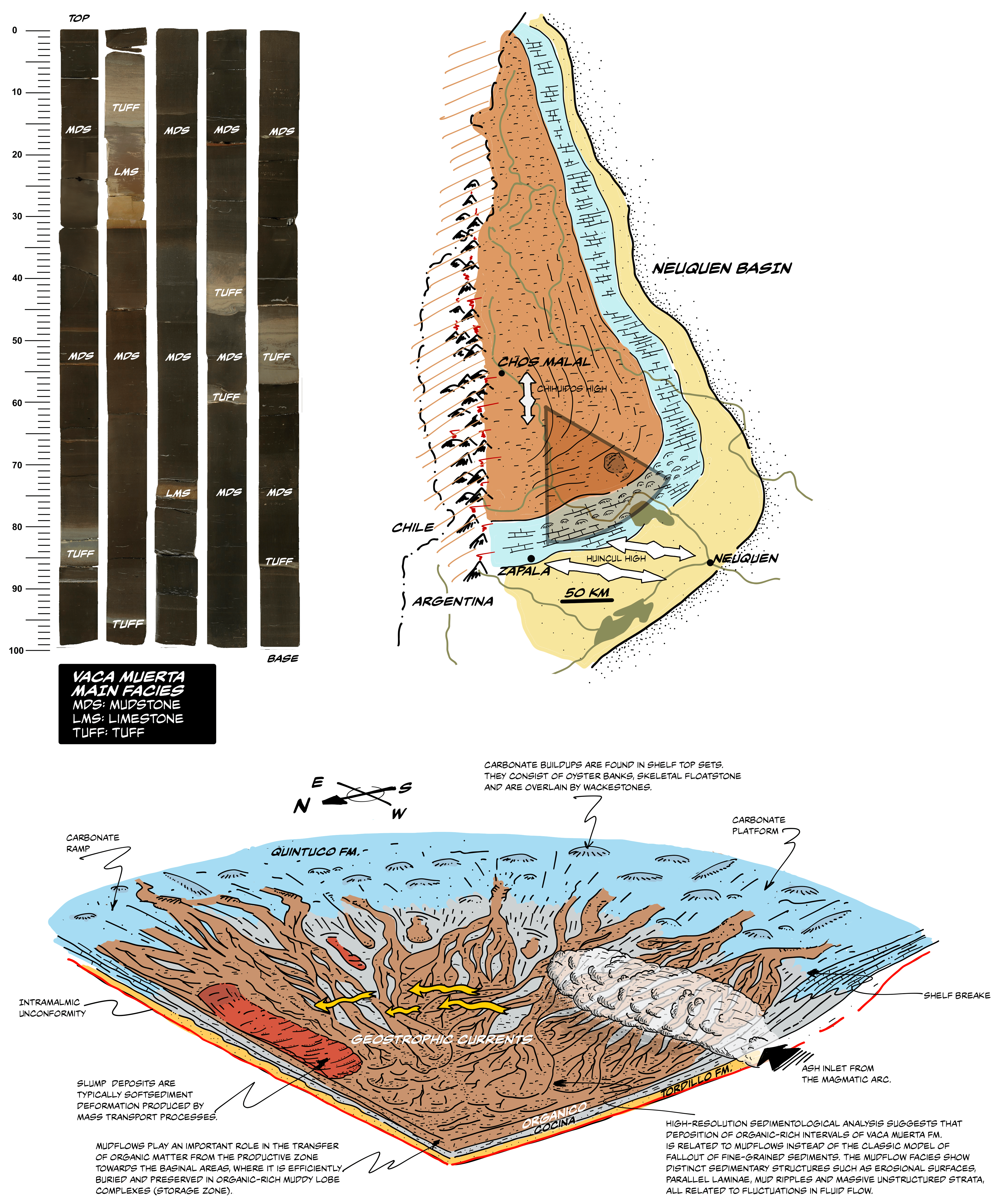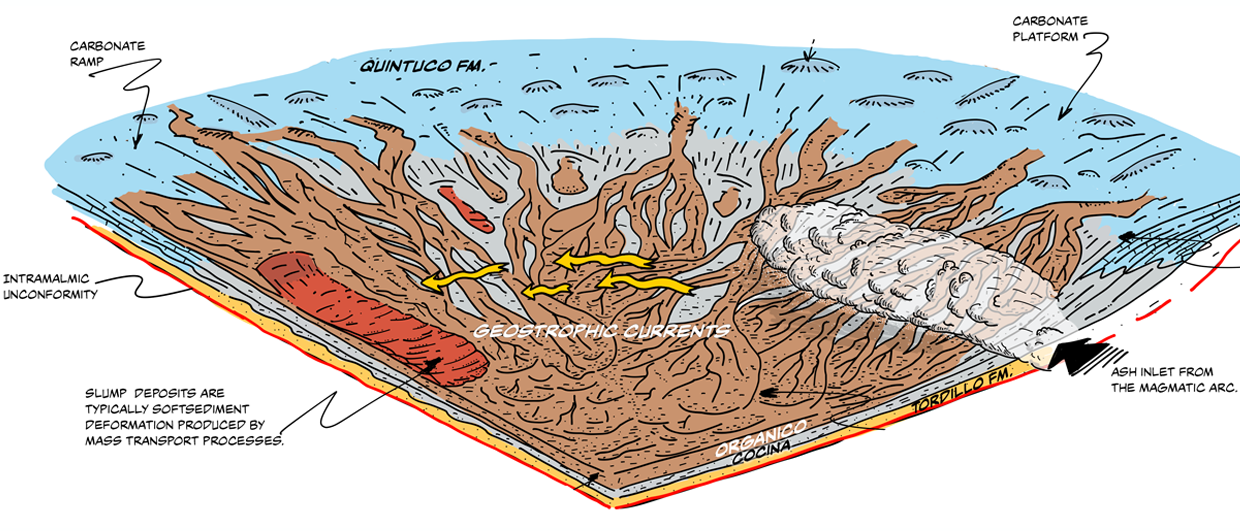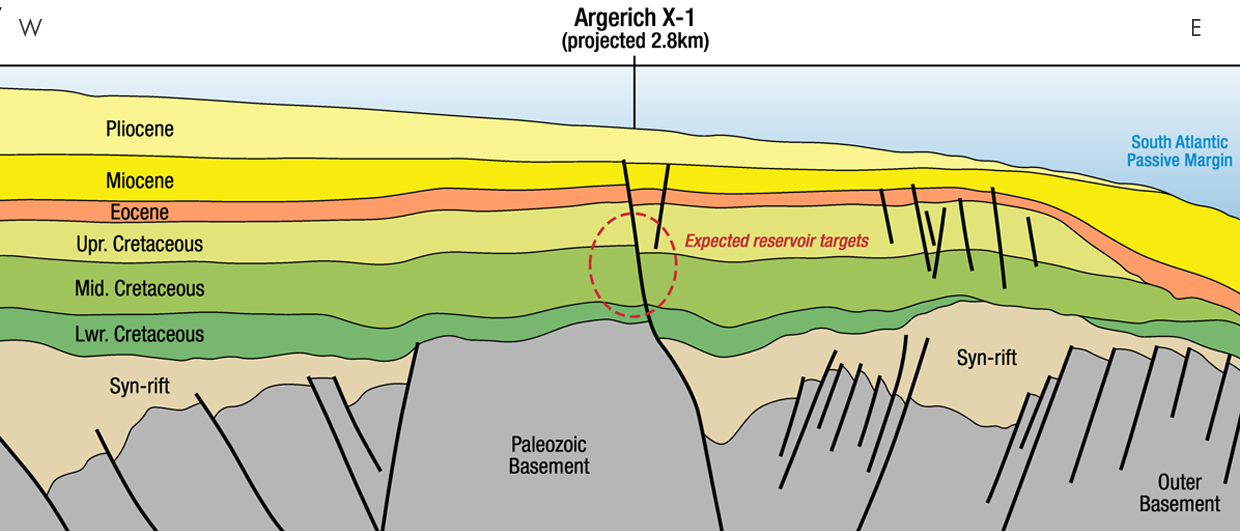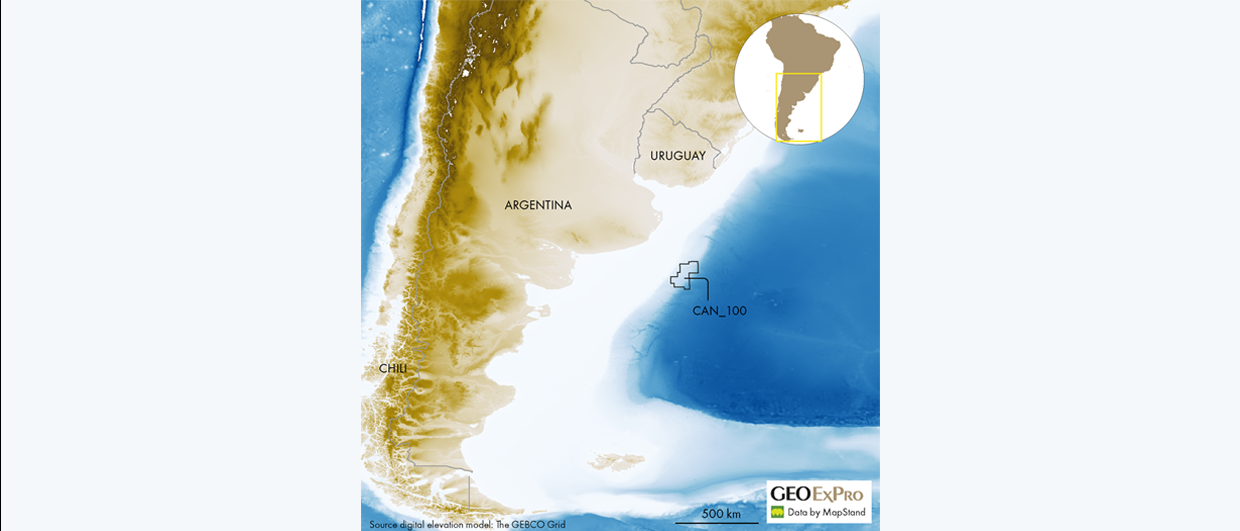The Jurassic Vaca Muerta unit is a treasure trove with an estimated potential of 308 TCF of gas and 16.2 billion barrels of oil. While there are various types of facies like volcaniclastic, carbonate, and mixed siliciclastic-carbonate, it’s the bituminous marls that steal the show.
But there is a succession of 2,500 m (uncompacted, 1,000 m compacted) of fine-grained sediments, deposited in just 10 million years. That’s almost double the usual rate for pelagic sedimentation, which is around 1-1.6 mm/year. So, how did this happen?

Well, recent high-resolution sedimentological studies suggest that the sedimentation of Vaca Muerta is actually due to fluid mud flows, not the traditional “normal fallout” model. The marlstone facies show tractive structures, suggesting that the sediments mainly piled up from gravitational mudflows, tuffaceous material and bioclastic detritus.
These currents played a crucial role, transporting sediments from marginal environments to the heart of the basin. And this is what we illustrate here.




